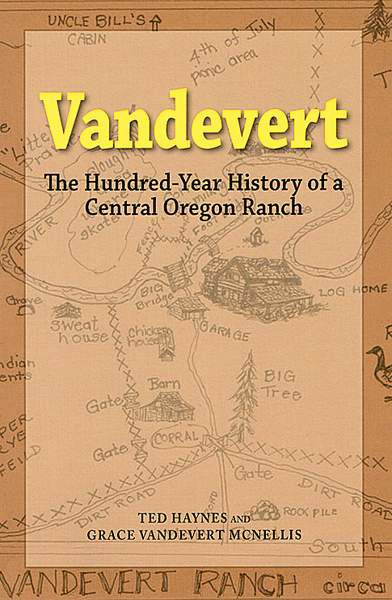Vandevert Ranch
Published 5:00 am Sunday, April 3, 2011

- Vandevert Ranch
Author Ted Haynes lives in Menlo Park, Calif., most of the year but spends his summers at his second home in Central Oregon’s Vandevert Ranch, a private, 400-acre gated community of 16 log cabin homes 16 miles south of Bend.
Since buying land there in 1996, Haynes has become something of a local historian, partly through his work on the website www.vandevertranch.org.
From that starting point, Haynes collaborated with Grace Vandevert McNellis, granddaughter of ranch founder William Plutarch Vandevert, on a new book, “Vandevert: The Hundred-Year History of a Central Oregon Ranch.”
McNellis has lived in Washington state since the 1950s, but returns annually to visit, Haynes said.
“Grace and I worked on the history of the Vandevert Ranch for several years,” he says. “The ranch had been an important part of Deschutes County, well-known for 100 years; it was really a landmark. It would be a shame if that history were lost — and it was an interesting history, we thought.”
Central Oregon was a different world at the time of Vandevert Ranch’s founding in 1892. Founder William Plutarch Vandevert paid his brother $600 for two 80-acre parcels just east of the Little Deschutes River and obtained an adjacent 160 acres, most of it west of the river, by homesteading.
The ranch, which lies at the north near where the Little Deschutes River joins the Deschutes River, predates both Bend (1904) and Deschutes County (1916). Grace, born in 1929, can recall Native Americans visiting the ranch each fall in the 1930s. They would camp in a pasture at the ranch and hunt.
“They were there for about two weeks hunting deer. … The men would go hunting and bring back deer meat and hides. The women would prepare the hides for tanning and making moccasins, gloves, clothing and many other things,” she says in the book.
Printed by Haynes’ own small press, The Robleda Co., and retailing for $16.95, “Vandevert” is structured chronologically, with additional chapters on timber, the Harper School, Camp Abbot, log houses and more.
Haynes feels it’s important for people to know the history of the place where they live.
“Especially around Bend, because so many people are new in Bend. They love the area for the recreation and beauty; there are a lot of great things about Bend. But it’s grown so much that, I think, a lot of them are out of touch with where the place came from. I think a lot of them would be interested to know how it happened.”
Though the community is not accessible to the public, folks can float through on the Little Deschutes.
When the Vandeverts owned it, the ranch was 320 acres. Jim and Carol Gardner, its developers, acquired another 80 from the Forest Service, according to the book.
The Gardners built the new “Homestead” in the late 1980s. Some of the logs from the Old Homestead were reusable nearly 100 years after the original was built, according to “Vandevert.”
Haynes, 66, is retired from a career in marketing for high-tech companies, and has another couple of books under his belt, including “The Electronic Commerce Dictionary” and a novel, “The Dot.Com Terrorist.”
He’s now at work on a collection of fictional stories set at his beloved second home of Vandevert Ranch. The stories will be set “from the 1800s up to, actually, into the future,” he says. “It’s a base for my imagination.”






